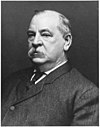Hatch Act of 1887
Pub. L. 49–314 | |
| Statutes at Large | 24 Stat. 440, Chapter 314 |
|---|---|
| Codification | |
| Titles amended | 7 U.S.C.: Agriculture |
| U.S.C. sections created | 7 U.S.C. ch. 14 § 361a et seq. |
| Legislative history | |
| |
The Hatch Act of 1887 (ch. 314, 24
Morrill Act of 1862
, with few exceptions.
Many stations founded under the Hatch Act later became the foundations for state
cooperative extension services under the Smith–Lever Act of 1914
.
Congress amended the act in 1955 to add a formula that uses rural and farm population factors to allocate the annual appropriation for
2002 farm bill
(P.L. 107–171, Sec. 7212), states will continue to be required to provide at least 100% matching funds (traditionally, most states have provided more). On average, Hatch Act formula funds constitute 10% of total funding for each experiment station. (7 U.S.C. 361a et seq.).
See also
- Adams Act of 1906
- Purnell Act of 1925
- Bankhead–Jones Act of 1935
- George W. Atherton
External links
- Hatch Act of 1887 as amended (PDF/details) in the GPO Statute Compilations collection
- "The Hatch Act of 1887". National Institute of Food and Agriculture. United States Department of Agriculture.
- Barnes, John M. (1988). "Impacts of the Hatch Act on the Science of Plant Pathology" [Hatch Act Observance] (PDF). The American Phytopathological Society.
- "Hatch Agricultural Experiment - Stations Act" [Abridged List of Federal Laws Applicable to Agriculture]. Internet Archive. United States Department of Agriculture. 1948. p. 2. OCLC 1037726571.


